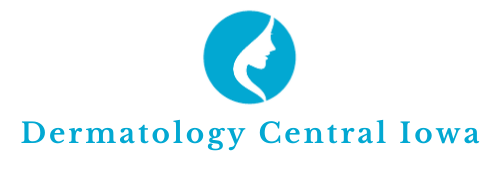Complete Guide to Herpes Treatments
- How It Works
The herpes simplex virus Type 1 (HSV 1) is an extremely common and highly contagious infection. Worldwide, it is estimated that 3.7 billion people under age 50 are infected with HSV-1--about 67% of the under 50 population.
HSV-1 is typically asymptomatic. Many people who have the infection never know they have it. Sometimes, however, the virus can cause an outbreak of painful, unsightly blisters and ulcers on the lips and mouth.
Herpes simplex virus Type 2 (HSV-2) is a sexually transmitted infection. It is estimated that 491 million people aged 15-49 have the infection, or roughly 13% of the 15-49 population.
HSV-2 is also typically asymptomatic, but can cause an outbreak of herpes blisters in the genital area.
Both HSV-1 and HSV-2 are lifelong infections.
However, treatment can improve the severity and frequency of symptoms.
- Prevention
The most effective way to prevent the spread of HSV-2 is through practicing safe personal and sexual practices.
- Don't have sex during an outbreak (when visible sores are present on the mouth or genitals)
- Always use condoms during vaginal, oral or anal sex
- Take any prescribed herpes medications daily to reduce outbreaks
The majority of HSV-1 infections occur during childhood through infected saliva. You can reduce the likelihood of spreading HSV-1 to an uninfected person by avoiding contact during an outbreak. However, the virus may live in cells on parts of the body that do not show symptoms during an outbreak.
*It's important to note that practicing safe sexual practices and reducing contact during an outbreak may not prevent the spread of the virus. Because the infection can live in cells not protected by a condom, it can still be passed to an uninfected person if contact is made with other parts of the skin.
- Symptoms
Symptoms of HSV-1 include:
- Tingling, itching and burning on the lips, mouth or genitals before an outbreak
- Open sores on the mouth, lips or genitals. These sores are filled with fluid, and may break open, bleed and become covered in a crust. These sores can last for up to 10 days before beginning to heal.
- Flu-like symptoms. These can include muscle aches, fever, and swollen lymphs nodes, typically in the neck.
- Eye infection. Rarely, the herpes simplex virus can be transferred to the eye, causing pain, sensitivity to light, a feeling of grittiness in the eye, and discharge. Scarring and cloudy vision can also occur.
Symptoms of HSV-2 include:
- A burning sensation while urinating. This symptom most commonly occurs in women with an outbreak of genital herpes caused by HSV-2.
- Open sores on or inside the vagina, on the penis, near or on the anus and on the buttocks. Sores caused by HSV-2 can also appear on other parts of the body. These sores can last anywhere from two to six weeks.
- Flu-like symptoms. These can include fever, muscle aches and swollen lymph nodes in the groin.
Diagnosis of HSV-1 and HSV-2
If you suspect you may have HSV-1 or HSV-2 infection, it's important to visit your doctor.
Typically, physical examination and skin swabs of skin sores or blisters are used to deliver a diagnosis of HSV-1 or HSV-2.
If you do not have obvious symptoms, such as open sores or blisters, your doctor may request a blood test to confirm a diagnosis.
- Treatments
HSV-1 and HSV-2 are treated using a variety of methods.
HSV-1 treatments include:
- Anti-viral medications. Anti-viral medications like acyclovir, valacyclovir, famciclovir, and penciclovir can help reduce the frequency and severity of outbreaks of both HSV-1. Famic
- Topical anti-viral ointments. Acyclovir and penciclovir are often prescribed as topical treatments to address the symptoms of HSV-1.
- Over-the counter cold sore medications and creams. Abreva can be purchased over-the-counter and can speed healing and reduce pain from a cold sore or fever blister caused by HSV-1. Lip balms or creams containing menthol can help alleviate pain and restore moisture to cracked skin affected by cold sores.
- Lip balms and creams containing SPF. Sun exposure can worsen the severity and pain caused by a cold sore.
- Keeping the affected area clean and moist.
Treatment for HSV-2 include:
- Anti-viral medications. Similar to HSV-1, genital herpes caused by HSV-2 can be treated using anti-viral medications like acyclovir, famciclovir and valacyclovir. Typically, these medications are taken during your initial outbreak to lessen your symptoms. After your initial outbreak clears, you may be prescribed intermittent anti-virals to reduce your number of outbreaks or lessen the severity of an outbreak after it occurs.
- Daily suppressive antiviral medications. For individuals who experience regular or frequent outbreaks, daily anti-viral medication may be recommended to reduce the number and severity of outbreaks by up to 80%. Daily suppressive therapy is typically prescribed at a lower dose than intermittent medication to treat herpes simplex outbreaks.
Talk to your healthcare provider about treatment options if you feel that your symptoms are not being effectively managed by your current treatment regimen.
Contact Dermatology Central Iowa
We will get back to you as soon as possible.
Please try again later.

